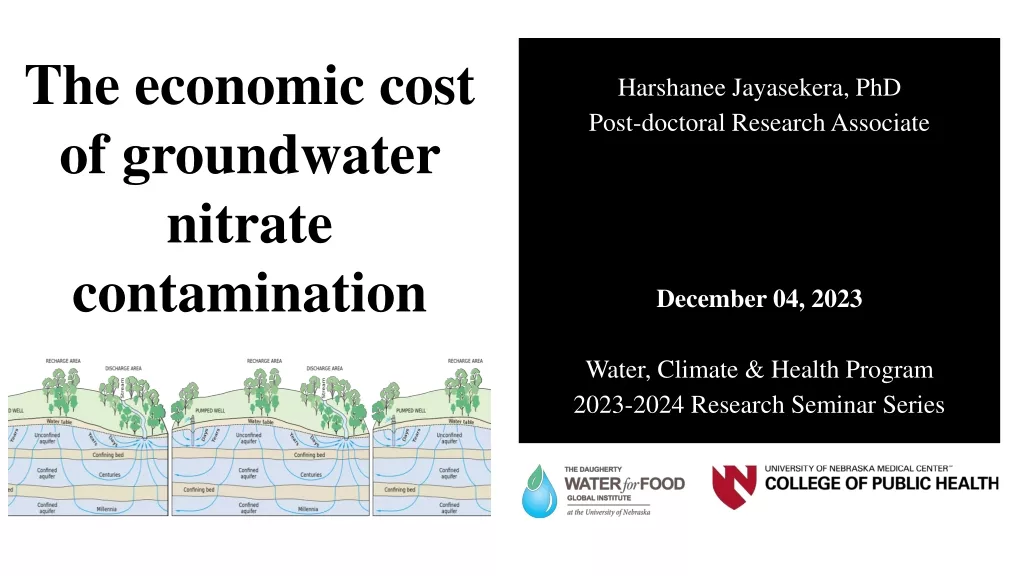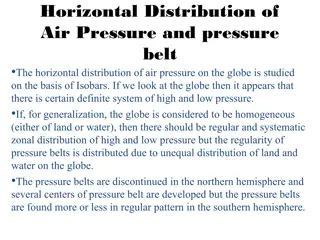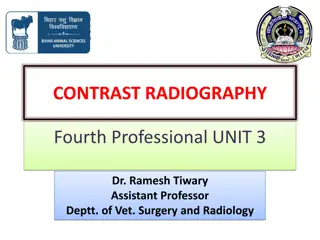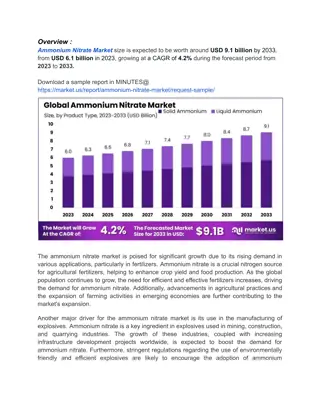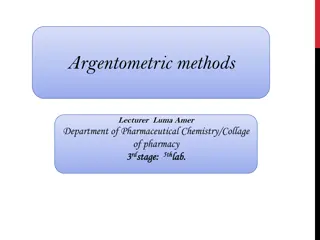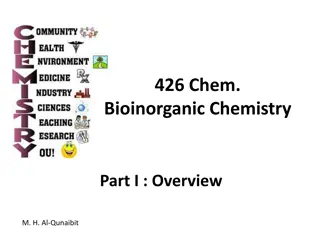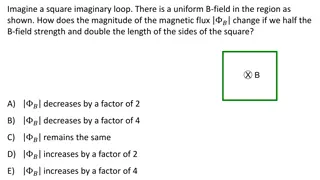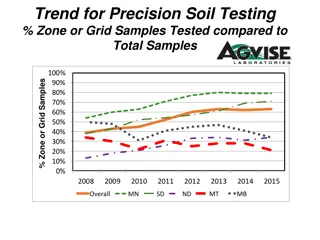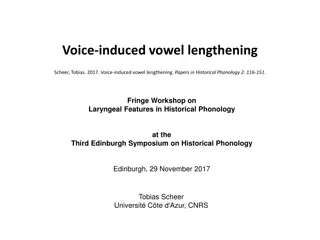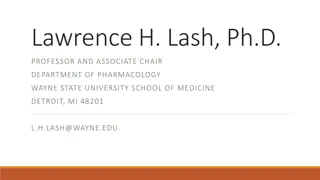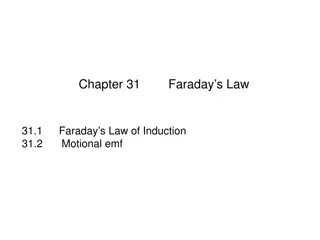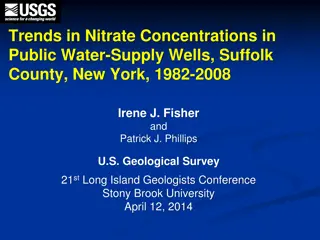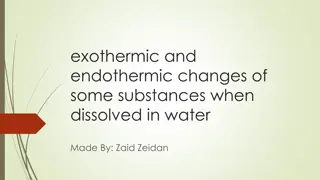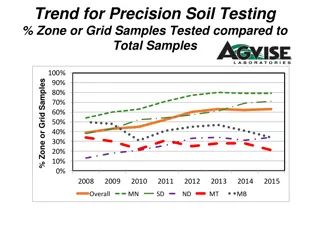The Role of Inorganic Nitrate in Preventing Contrast-Induced Nephropathy
Contrast-Induced Nephropathy (CIN) poses risks to patients undergoing angiography. This study evaluates the potential benefits of dietary inorganic nitrate in preventing CIN and its mechanisms. Results show promising renoprotective effects, highlighting a potential preventive approach for at-risk patients.
Download Presentation

Please find below an Image/Link to download the presentation.
The content on the website is provided AS IS for your information and personal use only. It may not be sold, licensed, or shared on other websites without obtaining consent from the author.If you encounter any issues during the download, it is possible that the publisher has removed the file from their server.
You are allowed to download the files provided on this website for personal or commercial use, subject to the condition that they are used lawfully. All files are the property of their respective owners.
The content on the website is provided AS IS for your information and personal use only. It may not be sold, licensed, or shared on other websites without obtaining consent from the author.
E N D
Presentation Transcript
The Effect of Inorganic Nitrate on Contrast-Induced Nephropathy in Patients undergoing Coronary Angiography/Percutaneous Coronary Intervention for Acute Coronary Syndrome (ACS) DA Jones, AM Beirne, M Kelham, L Wynne, M Andiapen, KS Rathod, T Parakaw, J Adams, A Learoyd, K Khan, T Godec, P Wright, S Antoniou, A Wragg, M Yaqoob, A Mathur, A Ahluwalia - NITRATE-CIN Investigators
Contrast Induced Nephropathy CIN, or contrast associated acute kidney injury (CA-AKI), defined by a deterioration in kidney function after contrast exposure Higher risk post angiography for ACS in older patients and/or those with heart failure, chronic kidney disease or diabetes Significant clinical consequences: longer hospital stays, increased risk for renal replacement therapy, recurrent revascularisation procedures and higher mortality.
Pathophysiology Inflammation Nitric Oxide (NO) Platelet Activation Microvascular Injury Mechanisms Embolisation Replace LOST Nitric Vasoconstriction ROS Generation Oxide
The Solution Dietary Inorganic Nitrate (NO3-)
Pilot Data Elevated Nitrite Levels and Renoprotection Change in Creatinine Rates of AKI Placebo Nitrite 15 120 0.20 Placebo Nitrite 15 120 0.20 10 10 0.15 Change in Creatinine ( mol/L) 0.15 Change in Creatinine ( mol/L) 100 16 mol/L diff *P=0.015 100 Percentage (%) Percentage (%) 5 NGAL (ng/ml) 5 NGAL (ng/ml) 0.10 0.10 12.5% vs 2.5% P=0.108 0 0 80 80 0.05 0.05 -5 -5 0.00 -10 60 0.00 -10 60 Placebo Nitrite Nitrite Placebo Nitrite Nitrite Baseline 24 hour 4 hour 6 month 24 hour 6 month Placebo Placebo Baseline 4 hour *Significance shown for unpaired t test between groups
NITRATE-CIN A prospective, randomised, double-blind placebo-controlled trial to test the efficacy of inorganic nitrate in the prevention of CIN in patients undergoing invasive coronary angiography for NSTE-ACS 640 pt. Potassium Nitrate (12 mmol/744 mg nitrate) Potassium Chloride VS 5 days 5 days
St Bartholomews Hospital 640 Patients Single Centre Study St Bartholomew's Hospital, London, UK Sponsor: Queen Mary University of London Adopted by Barts Cardiovascular CTU Funded by Heart Research UK
Eligibility Criteria Inclusion Criteria Patients undergoing invasive coronary angiography NSTE-ACS and Convalescent STEMI Aged 18 At risk of Contrast Induced Nephropathy eGFR<60ml/min OR 2 of the following: Diabetes Liver failure (cirrhosis) Age > 70yr Exposure to contrast in last 7 days Heart Failure (or LVEF<40%) Concomitant renally active drugs Exclusion Criteria ST segment myocardial infarction Haemodynamic or Clinical Instability Subjects with eGFR<20ml/min or on renal replacement therapy Current life-threatening condition other than vascular disease Pregnancy or unknown pregnancy status.
Primary Endpoint Primary Endpoint Incidence of Contrast Induced Nephropathy as defined by KDIGO criteria1 AKI Stage 1: SCr increase 26?mol/l within 48-72hours or SCr increase 1.5-2 x reference SCr within 1 week AKI Stage 2: SCr increase 2-3 x reference SCr within 1 week AKI Stage 3: SCr increase 3 x reference SCr within 1 week or SCr 354 ?mol/l or initiated on RRT Sample Size 640 patients provided: 90% power for CIN reduction of 60% assuming 12% CIN rate 80% power allowing for 25% drop-out 1. Fliser D, Laville M, et al. A. Nephrol Dial Transplant Off Publ Eur Dial Transpl Assoc - Eur Ren Assoc 2012 :4263 72.
Baseline Demographics Inorganic Nitrate (N=319) 70.8 11.8 91 (28.5) 228 (71.5) 58 (18.2) 22 (6.9) 239 (74.9) 28.1 5.6 237 (74.3) 196 (61.0) 107 (33.5) 106 (33.2) 146 (45.8) 3 (0.9) 21 (6.6) Placebo (N=321) 71.2 11.5 80 (24.9) 241 (75.1) 44 (13.7) 31 (9.7) 242 (75.4) 28.6 5.8 248 (77.3) 190 (59.0) 105 (32.7) 104 (32.4) 148 (46.1) 3 (0.9) Age (years), mean SD Female Male Asian Black White Sex, n (%) Ethnicity, n (%) BMI (kg/m2), mean SD Hypertension, n (%) Hypercholesterolaemia, n (%) Previous PCI, n (%) Previous MI, n (%) Diabetes, n (%) Type I Type II: Diet controlled, 20 (6.2) 89 (27.7) Type II: Drug therapy, 94 (29.5) 36 (11.2) 47 (14.6) 274 (85.4) 9 (2.8) 21 (6.5) 167 (52.1) 118 (37.0) Type II: Insulin Unstable angina NSTEMI 28 (8.8) 50 (15.7) 269 (84.3) 17 (5.3) 17 (5.3) 191 (59.8) 128 (40.0) Presentation, n (%) Peripheral Vascular Disease, n (%) Stroke, n (%) CKD (eGFR<60ml/min), n (%) LV impairment, n (%)
Procedural Characteristics Inorganic Nitrate (N=319) Placebo (N=321) Femoral Radial 22 (6.9) 297 (93) 169 85 315 323 1,732 2,077 14 10 137 (42.9) 147 (46.1) 35 (10.9) 7 (2.2) 66 (21) 39 (12) 51 (16) 49 (15) 9 (2.8) 9 (6.1) 0 (0) 45 (14) 276 (86) 181 95 390 400 2,176 3,741 15 9 128 (39.9) 160 (49.8) 33 (10.3) 5 (1.6) 84 (26) 48 (15) 52 (16) 58 (18) 22 (6.9) 11 (6.8) 3 (2.0) Access route, n (%) Contrast (mL), mean SD Radiation (mGy), mean SD Radiation (mGy^2), mean SD Syntax Score, mean SD Medical PCI Surgery LMS LAD LCx RCA IVUS OCT Rotational Atherectomy IVL Outcome, n (%) Vessel Treated, n (%) Intravascular Imaging, n (%) Adjunctive Techniques, n (%)
Mehran Score Placebo Inorganic Nitrate (N=321) (N=319) Mehran score, mean (SD) 9.74 (3.59) 10.28 (3.44) Low ( 5) 26 (8.10) 25 (7.84) Medium (6-10) 183 (57.01) 153 (47.96) Mehran risk group, n (%) High (11-15) 88 (27.41) 112 (35.11) Very high ( 16) 24 (7.48) 29 (9.09)
Contrast Induced Nephropathy 9.1% vs 30.5%, p<0.0001 Mehran Model 7.3% vs 21.8%, p<0.0001 Inorganic Nitrate Inorganic Nitrate Placebo Placebo 0 0 10 10 20 20 30 30 40 40 Percentage (%) Percentage (%)
Pre-Specified Subgroup Analysis Placebo Inorganic Nitrate Interaction P value Subgroup OR (95% CI) P value N=282 N=274 Pre-existing organic nitrate use, N=72 10 (24.39) 6 (19.35) 0.65 (0.20 to 2.08) 0.465 0.040 No prior organic nitrate use, N=484 76 (31.54) 19 (7.82) 0.17 (0.10 to 0.29) <0.001 Diabetic, N=261 49 (36.30) 16 (12.70) 0.23 (0.12 to 0.45) <0.001 CIN, number (%) 0.583 Non-diabetic, N=295 37 (25.17) 9 (6.08) 0.18 (0.08 to 0.39) <0.001 Troponin positive, N=480 74 (30.45) 21 (8.86) 0.20 (0.12 to 0.35) <0.001 0.837 Troponin negative, N=76 12 (30.77) 4 (10.81) 0.24 (0.07 to 0.83) 0.025 Mehran risk score ( 10), N=320 43 (24.43) 7 (4.86) 0.16 (0.07 to 0.36) <0.001 0.520 Mehran risk score ( 11), N=236 43 (40.57) 18 (13.85) 0.22 (0.12 to 0.42) <0.001
Elevation in Circulating Nitrite and Nitrate Levels 2.0 500 Inorganic Nitrate Placebo Inorganic Nitrate Placebo Nitrate ( mol/L) Nitrite ( mol) 400 1.5 300 1.0 200 0.5 100 0.0 0 4-6hr 48-72 3 month 4-6hours 48-72hrs 3 months
Blood Pressure 140 76 Placebo Inorganic Nitrate Inorganic Nitrate Placebo Systolic Blood Pressure (mmHG) Diastolic Blood Pressure (mmHg) 135 74 130 72 125 70 120 68 Baseline 4-6 Hour 3 month Baseline 4-6 hour 3 month
Procedural MI 0.20 0.20 SCAI definition Procedural MI (Proportion) Procedural MI (Proportion) 4.1% vs 12.5%, p=0.003 0.15 0.15 0.10 0.10 0.05 0.05 0.00 0.00 Placebo Placebo Inorganic Nitrate Inorganic Nitrate
Change in Renal Function at 3 Months Compared to Baseline 250 40 200 Change in eGFR (mls/min/1.73m2) Change in Creatinine ( mol/) 20 150 100 0 50 0 -20 -50 -40 -100 Placebo Inorganic Nitrate Placebo Inorganic Nitrate
1 Year MACE MACE All-cause mortality MI Unscheduled Revascularisation
1 Year MAKE MAKE All-cause mortality Renal Replacement Therapy (RRT) Persistent Renal Dysfunction >50% increase in baseline serum creatinine
Summary In patients at risk of renal injury undergoing coronary angiography for ACS, dietary inorganic nitrate reduces CIN compared to placebo This corresponded to improved renal outcomes at 3 months and both MACE and MAKE out to 12 months These findings could have important implications in reducing the burden of CIN on healthcare systems worldwide Further studies powered off MACE are needed to confirm these findings.
Acknowledgements Study Team Amrita Ahluwalia Anthony Mathur Anne-Marie Beirne Mervyn Andiapen Lucinda Wynne Barts CVCTU Anna Learoyd Kamran Khan Tom Godec Jessica Adams Victoria Hammond Marian Benford Shahana Chowdhury Simon Menezes Barts Heart Centre Matthew Kelham Krishnaraj Rathod Nasim Forooghi Susana Palma Andreas Baumbach TSC Andrew Wragg Suzanne Forbes Paul Wright Ray Amersey DSMC Rob Bell Sotiris Antoniou Alex Sirker Rhian Gabe Oliver Guttmann


